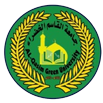Overview of manuscript submission process
Here are the brief outlines of the manuscript submission process for JQGU journal.
1. Prepare manuscript text in Microsoft Word.
2. Acceptable figure formats are TIFF, high quality JPEGs files.
3. All the manuscript must be formatted according to the JQGU journal guidelines.
4. If your manuscript is accepted for publication in JQGU journal, you will be receiving an acceptance letter from the editorial board.
5. All authors on the manuscript or research paper are responsible for the scientific content of their papers, each author committed to right an obligation about the status of this paper whether it’s a cited from M.Sc. project or PhD thesis or not.
Preparing your Manuscript
We encourage all authors to submit original manuscripts which are not previously published and not under consideration for publication elsewhere. Add to that, we encourage authors to write Mini Reviews, Reviews and Research Articles and Manuscripts in English.
Publication fee
Page charges (for Iraqi citizens): 100 000 Iraqi dinars per article (which includes color figures) Schematics, Color Figures and Tables.
Page charges (for non-Iraqi citizens): 75 $ per article (which includes color figures) Schematics, Color Figures and Tables.
Criteria for the preparation color figures
We encourage authors to use color figures where they will enhance the presentation of the data. Any figure submitted in color will be reviewed and processed with the understanding that the figure will potentially be published in color.
Manuscript Page Specifications
Authors should use write the text in one space throughout. The addressing of each item should be written in the same size but bold and uppercase letters mode must be used. The text should be submitted as single column format with 1 inch space on left and right column and 0.5 inches spacing between columns, from title, summary/abstract, introduction, methods, results, figure legends and discussion. All pages in the manuscripts and figures should be numbered appropriately.
Manuscript Title
The title of the manuscript should be short and intelligible to the readers and should convey your essential meaning of the data presented in the manuscript. Which should not exceed 100 characters.
Authors
Authors should provide their complete names, affiliations and also specify corresponding author/s on the manuscript such current e-mail address.
Abstract
Authors should describe the significance of the findings reported in the manuscript clearly and concisely in the summary or abstract. The summary or abstract should not exceed 250 words. In addition to English as a main language, write the abstract in Arabic language as well.
Keywords
You must mention at least five keywords and not more than eight key words in an alphabetic manner.
Introduction
The purpose of introduction should be extensive review of the literature and authors should include the purpose of the study, specifying the relationship of the literature to the relevance of the questions addressed in the manuscript.
Methods
The purpose of introduction should be extensive review of the literature and authors should include the purpose of the study, specifying the relationship of the literature to the relevance of the questions addressed in the manuscript.
Results
Results should be presented in text along with figures, graphs, tables with the schematic hypothesis based on the data.
Discussion
All of the observed results should be discussed in a direct and comprehensive mode. Concise events must be kept and further speculations have to be avoided as much as possible. Conclusions should be focused on the interpretation of results written briefly.
References
Citations can include, books/chapters, reviews, reports, opinions and letters published in any scientific journals. These should be numbered, and journals were abbreviated as published with legibly written with details like title, volume, page number and year.
Reference Examples
Article within a journal
Andrade CC, Young KI, Johnson WL, Villa ME, Buraczyk CA, Messer WB, Hanley KA. 2016. Rise and fall of vector infectivity during sequential strain displacements by mosquito-borne dengue virus. J Evol Biol 29:2205-18.
In press article
Voong LN, Xi L, Sebeson AC, Xiong B, Wang JP, Wang XZ. Insights into nucleosome organization in mouse embryonic stem cells through chemical mapping. Cell, in press.
Website Citation
5. UNEP: Cleaner Production Assessment in Industries. Production and Consumption Branch. United Nations Environment Program, 2012. http://www.unepie.org/pc/cp/understanding_cp/cp_industries.htm (Accessed on February 13, 2011).



